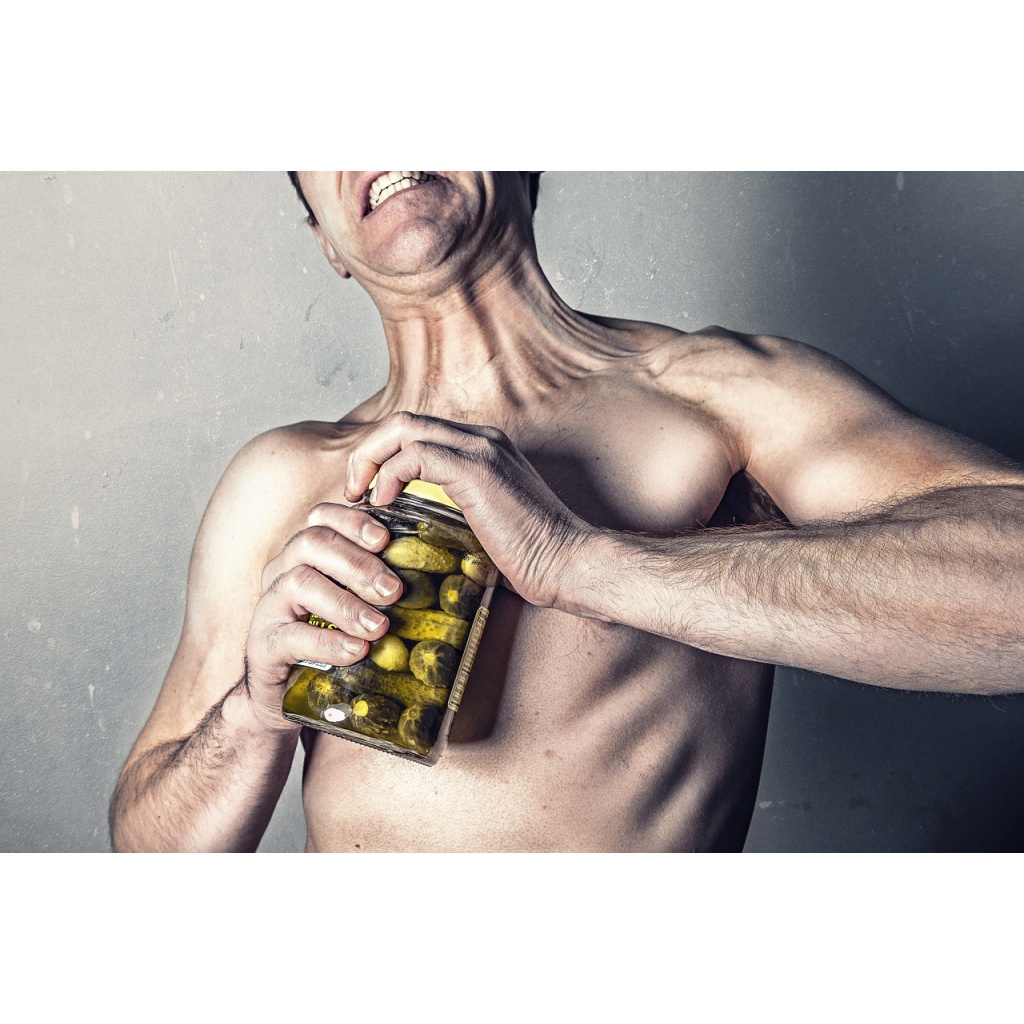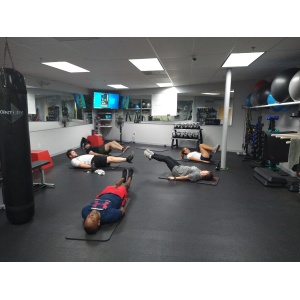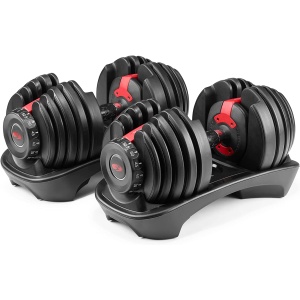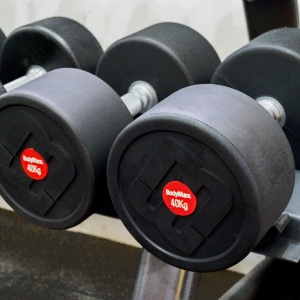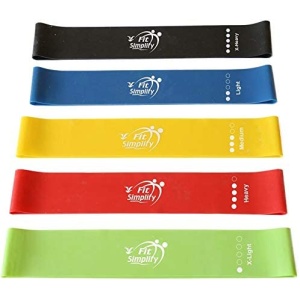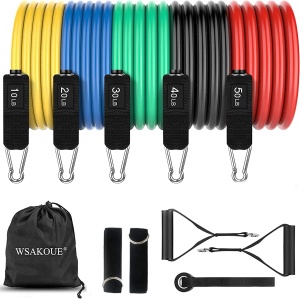Lift Heavy to Live Long? New Study Links Strength and Biological Age
By Holly Denton, Health & Wellness Writer
Scientifically reviewed by: Michael A. Smith, MD
Get a grip—that is, if you want to live long! While lifestyle choices can all contribute in one way or another to your true biological age, those who regularly incorporate strength training into their daily lifestyles are in luck. According to a new study from the University of Michigan, the strength of your grip may be an accurate predictor to measure longevity.
The study, published in the Journal of Cachexia, Sarcopenia and Muscle, followed more than 1,200 middle-aged and older adults over an 8-10 year period, and focused on the relationship between grip strength and a specific model of aging—DNA methylation patterns—using three different “age acceleration clocks.” These clocks were used to calculate biological age, the measurement of age based on a variety of biomarkers, and the rate of aging compared to chronological age, which is the amount of time that has passed from a person’s birth.
The results revealed an association between weaker grip strength and biological age acceleration in both older men and women. Or, to put it more simply, those with a strong grip are more likely to have a younger biological age compared to those whose hand grip strength is considered weak.
According to the lead author of the study, Mark Peterson, Ph.D., M.S., this observation shows the potential for primary care providers to use grip strength as an indicator of risk factors for various health conditions. “We’ve known that muscular strength is a predictor of longevity, and that weakness is a powerful indicator of disease and mortality,” Dr. Peterson explained, “but, for the first time, we have found strong evidence of a biological link between muscle weakness and actual acceleration in biological age.”
Why does having a strong grip matter?
If you’re surprised to hear that grip is a measurement of longevity, you’re not the only one! Being able to hold onto something tightly might not seem like a big deal—so what if you can’t squeeze that last drop out of the bottle of toothpaste, or open a stubborn jar of pasta sauce? Note, however, that hand grip strength isn’t just about your ability to squeeze or having a firm handshake. Indeed, your grip says a lot about the overall strength of your forearms and other muscles. Case in point: you need to have solid hand grip strength to be able to manage a barbell or dumbbell at the gym!
What’s the connection between grip strength and biological age?
This longitudinal Health and Retirement study included about 1,300 adults (average age of 70 years old) and measured both DNA methylation and grip strength, which is just how hard you can squeeze a device (in this case, the researchers used a spring-type hand dynamometer), and followed up over eight years. The results were clear—greater grip strength was associated with a younger biological age—at least according to their DNA methylation patterns!
The researchers utilized several different tools, including:
- PhenoAge
— Measures whether you are biologically younger or older than your actual chronological age. PhenoAge estimates mortality risk based on a variety of blood biomarkers and is used to predict multiple aging outcomes, including all-cause mortality, cancer, lifespan and Alzheimer’s disease.
- GrimAge
— Predicts estimated lifespan based on based on seven DNA methylation surrogates of plasma proteins. High GrimAge scores are associated with both morbidity and mortality.
- DunedinPoAm
— Represents individual variation across aging by calculating the pace you biologically age based on DNA methylation and longitudinal changes in 18 biomarkers.
The tools also highlighted that improving your muscle strength (specifically your grip strength) is a great way to protect against biological aging, and the negative health outcomes that come with it, with Peterson concluding, “If you maintain your muscle strength across the lifespan, you may be able to protect against many common age-related diseases.”
Note: Keep in mind that these resources and accompanying research did not measure lifespans or risk of mortality. Instead, by measuring biological age, these tools suggest that grip strength may be a clinically relevant aging marker and could be useful for predicting actual clinical outcomes.
At What Age Do You Start Losing Strength?
It’s important to start thinking about your muscle strength earlier than you think! Believe it or not, age-related muscle loss can begin around age 35, and muscles can decline from that point on at rate of 1-2% per year on average. Muscle mass in adults begins to decline even more rapidly by age 60, with the potential to accelerate by about 3% per year.
This decline is even more significant for those who don’t regularly incorporate physical activity into their lifestyle. According to Harvard Health, adults who don’t engage in regular strength training can expect to lose four to six pounds of muscle per decade, and often end up replacing that muscle with fat.
How does muscle strength change with age?
Like most age-related changes in the body, muscle strength is no exception. Even if your health habits haven’t changed, muscle mass and strength will decline over time as a part of the normal aging process. This age-related muscle loss is called sarcopenia. And, unfortunately, elderly people are at a higher risk of developing it. In some cases, sarcopenia can lead to frailty and adversely affect a variety of clinical outcomes, including increased risk of death, infection and falls, as well as slower wound healing.
Beyond muscle weakness, stiffness and neural activation also tend to worsen with age. This was reaffirmed by one study that aimed to understand the effects of age and sex on muscle strength based on mechanical and neuromuscular properties. The research subjects included 24 young and 20 older healthy women and men. A variety of factors were studied, including knee extensors and flexors, along with muscle and tissue stiffness, with the results revealing a reduction in overall muscle strength with age.
Is it harder to maintain muscle as you get older?
Similarly, to how overall strength changes with age, it’s no surprise that getting older inevitably makes it more difficult to maintain your hard- earned muscle. While that may sound discouraging, not all is lost here! Lifestyle choices make a significant impact on your overall health and how you age, especially when it comes to muscle function. Resistance training is a tried-and-true method of combating some of the less desirable aspects of aging. And if you want to really tip the longevity odds in your favor, incorporating grip strength exercises is a good idea.
In fact, one meta-analysis examined the effects of resistance training on muscle size and strength in very elderly individuals. The research was very promising, with the authors concluding that the very elderly can increase strength and muscle size by incorporating resistance training, which was even found to improve strength in the oldest subjects. This shows promise in mitigating the effects of muscle changes as you age.
How can I keep my muscles strong in old age?
Beyond healthy habits to ensure that your overall health is where you want it to be, there are other interventions that are important for keeping your muscles in optimal shape throughout your old age.
- Regular strength training
— According to Peterson, “Regular exercise is the most critical thing that somebody can do to preserve health across the lifespan,” and that the connection between athletic performance and longevity can be shown through things like grip strength measurements. There are many exercises that are helpful for gaining and maintaining muscle.
- Proper muscle recovery
— Along with making sure you’re taking enough time between your workouts, making sure you get enough sleep is a major aspect of muscle recovery and better preparing you for your next muscle strengthening workout.
- Smart nutrient strategy
— While you can’t stop Father Time, having a targeted nutrient strategy that supports muscle strength is a great idea to complement your healthy lifestyle. Some good research backed nutrients that have been shown to help maintain muscle include creatine and
β-hydroxy-β-methylbutyrate (HMB).
Best exercises to improve your muscle strength in old age
As we’ve mentioned, a major part of improving muscle strength is incorporating strength training into your routine, and there are certain exercises can help. They not only fight muscle loss, but are also great tools to help you gain and maintain good grip strength. There are several grip-specific exercises that will have you making full-body muscle gains in the process! Most of these exercises use a variety of weights, including dumbbells, a kettlebell, or even a barbell. If you want more of a challenge, try incorporating fat grips, a workout accessory that widens a workout bar’s diameter when doing these exercises:
- Bottoms-up
— A kettlebell exercise for grip strength training that involves inverting the weight so that the heavier part sits above the handle and the handle sits firmly in your palm. This inversion and instability forces you to engage your muscles and is a great grip strengthener (including your fingertips, wrists and forearm muscles!). Once you’ve got the hang of bottoms-up, you can try squats or floor presses to further engage your handgrip strength. Remember to start with light weight and try this one using your dominant hand before your non-dominant one.
- Pull-ups
— Pull ups are a great exercise for the whole body but are particularly good for shoulder stability and upper body strength. Want to mix it up? Try towel pull-ups! This bodyweight exercise works by improving both your upper body and your grip strength. It activates the forearm muscles more than a regular pull-up, making it a great grip-training exercise. If you’re not quite ready to make gains with pull ups, work your way up with dead hangs. Not only will these help you gain endurance and upper body strength on the pull-up bar, but dead hangs also are a helpful tool for decompressing the spine.
- Deadlifts
— Deadlifts are typically done with a barbell or dumbbell and will help increase grip strength simply through holding the weight, along with the motion of lifting up and placing down the weight in a series of reps.
- Wrist curls
— Another great grip training exercise, this wrist exercise targets the flexor muscles of the forearms, responsible for gripping and holding things.
- Personal Training
12 Week Customized Personal Training Program
- Exercise Equipment
Bowflex Adjustable Dumbbells
- Exercise Equipment
Home Gym
- Exercise Equipment
Loop Exercise Bands
- Exercise Equipment
Resistance Bands

